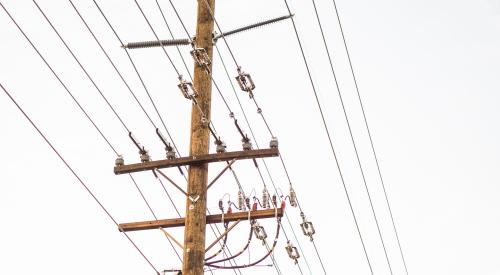First RFP Requiring Modular Construction on New York City Housing Project Issued
The New York City Department of Preservation and Housing recently issued its first request for proposals under its Housing 2.0 modular construction initiative. The RFP is for a new mixed-use affordable housing project on city-owned 49,397 square-foot site in Brooklyn. Using modular construction will allow the department to reduce construction costs, get housing built faster, and respond more quickly to demographic shifts, officials contend.
The use of modular construction for affordable housing initiatives has gained support in recent years, despite a lack of modular manufacturers in the New York metro area and logistical challenges that come with delivering and storing large modular pieces.
Deputy Mayor Alicia Glen said the goal of the program was to master mid-rise, modular multifamily development to help meet the city’s increased affordable housing goals, according to a report in The Real Deal. The city aims to create or preserve 300,000 residential units by 2026.
United States Resiliency Council Announces Support for Calif. Earthquake Resiliency Bill
The United States Resiliency Council through its support behind California’s AB 2681, a bill now in the appropriations committee that would assist cities in identifying the most seismically vulnerable structures.
The bill would provide funding and tools for cities to identify dangers to their communities and infrastructure. According to the council, the benefits of the bill include:
- Protection for affordable housing: Many vulnerable buildings are older structures that make up much of the state’s more affordable housing stock.
- Shielding communities from chaos: Projected loss of housing would leave hundreds of thousands of people homeless and in desperate need of refuge.
- Informing the public about personal risks: People have a right to make decisions about the buildings in which they live and work based on the best available information. Identifying and evaluating potentially vulnerable buildings is the first step toward engaging stakeholders about the importance of creating more resilient cities.
- Promoting social justice: Most of those impacted by a major quake will be lower-income residents whose lives and livelihoods will be disproportionately impacted due to their economic and social status.
- Protecting public health: Many older buildings contain asbestos and lead, which, when released into the air and groundwater from crumbled rubble will pose a public health problem of potentially overwhelming impacts.
New Pennsylvania Building Code is Great Advance for State’s Energy Efficiency
New homes and buildings built in Pennsylvania will make a significant step forward in energy efficiency under the state’s new building code. On May 1, Pennsylvania upgraded its commercial and residential energy codes to the 2015 model International Energy Conservation Code, with some provisions adopted from the 2018 model code.
Pennsylvania’s energy code had not been updated since 2009. The 2015 residential energy code is about 25% more efficient than the 2009 code. As a result, Pennsylvanians who buy new homes will save $8,100 over 30 years compared to a home built to the 2009 code.
The National Green Building Standard Approves the Water Rating Index
The Consensus Committee developing the next version of the National Green Building Standard (NGBS) approved the Water Rating Index (WRI). The WRI will go out for public comment as part of the draft NGBS. If approved, the National Green Building Standard will include the WRI methodology as an appendix and as one option for meeting the water efficiency requirements of the NGBS.
WRI is a zero-to-100 rating system patterned after the Energy Rating Index (ERI) already in code. The simple metric is meant to be easy to understand for consumers and water planners, and something builders can use to differentiate themselves from competition.
Accessory Dwelling Units Have Environmental Benefits
Seen as a way to add affordable homes in areas with high cost housing, accessory dwelling units (ADUs), can also be tools in the fight against climate change. Sometimes called mother-in-law apartments, these compact dwellings can be very energy efficient, cutting lifetime CO2 emissions by as much as 40% compared with medium-sized, single-family homes.
That level of efficiency far exceeds the benefits of almost any other green building practice, including using green building materials, state of the art insulation, and best practices in building material waste disposal. In many areas, zoning regulations make the construction of ADUs difficult, though.













